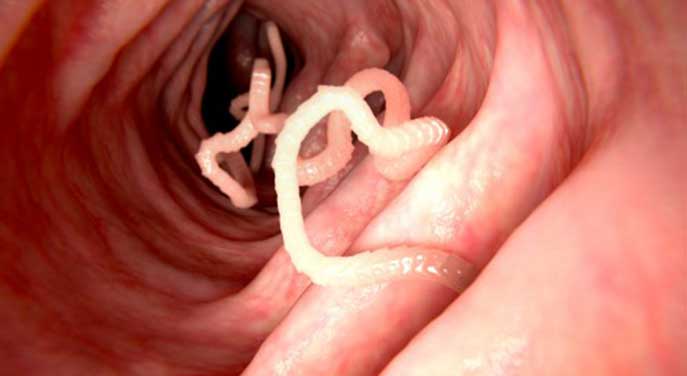A new study looking at research on parasitic worms suggests the pesky, but pervasive creatures have a far greater impact on the health of mammal populations than previously known.
 Kyle Shanebeck |
 Stephanie Green |
“Parasites don’t have to kill the animal to control a population,” says Kyle Shanebeck, a PhD student in the Faculty of Science’s Department of Biological Sciences at the University of Alberta, who led the research review.
Shanebeck’s analysis shows that helminths – large parasites such as tapeworms, flatworms and flukes – have negative effects on the energetic condition, or total body health, of their mammal hosts that can impair systemic functioning, repair, growth, environmental adaptability and reproduction.
“They can affect the animal’s ability to absorb nutrients, which can affect digestive health and behaviour, making them more aggressive and even changing where they forage,” notes Shanebeck, whose research is supervised by assistant professor Stephanie Green. “Helminth parasites also suppress immune action or weaken it, as the body spends energy to mount an immune response to fight them which can make a secondary infection worse.”
As Shanebeck explains, assessing population health in wildlife typically focuses on pathogenic diseases – the often fatal illnesses that can spread between species and potentially from animals to humans. Parasites, on the other hand, don’t kill their hosts, so they tend to be ignored in conservation and management models.
Helminth parasites are “as old as time and as ubiquitous as McDonald’s,” jokes Shanebeck, and all wildlife have at least one and often multiple parasites. The less fatal a parasite, the more prevalent it is within a population, with potentially stronger negative effects.
|
Related Stories |

|
| Containment key to managing invasive species in Alberta lake: study
|
| What the heck are jumping worms?
|
| How bugs and worms could help restore land after industrial use
|
Helminth parasites eat carbohydrates, making them less available to the animal and potentially changing how the gut produces and absorbs nutrients, causing diarrhea, lower body weight and other harmful effects. Shanebeck likens it to a power grid, where energy is redirected when faced with a supply challenge, depleting reserves. “Rolling blackouts” occur when the body starts making decisions between survival and reproduction.
Parasitic worms in cattle, for instance, won’t kill the animal but the resulting immune stress and other conditions like diarrhea may affect milk production, exacting a financial toll on farming operations. In less controlled wildlife settings, the overall health effects of parasites are harder to measure, which may be one reason these effects are often overlooked or assumed to be negligible.
Overall, Shanebeck found the strongest influence on variables was the lack of a consistent methodology to assess the data, so he and his team developed a set of protocols and applied an analytical framework for organizing parasite effects according to their impact on an animal’s health and body condition. They then applied this framework to examine 142 peer-reviewed studies documenting 599 effects of helminth parasites in wild, laboratory and domestic mammal hosts.
“We found consistently strong negative effects of infection on host energetic conditions across taxonomic groups,” says Shanebeck, who is hopeful the guidelines provided in the study will help shift best practices for research projects looking at helminths in wildlife populations.
“This is important for conservation management because we are trying to highlight a missed area, one that is probably a more important aspect of population health and survival.”
| By Donna McKinnon
Donna is a reporter with the University of Alberta’s Folio online magazine. The University of Alberta is a Troy Media Editorial Content Provider Partner.
The opinions expressed by our columnists and contributors are theirs alone and do not inherently or expressly reflect the views of our publication.
© Troy Media
Troy Media is an editorial content provider to media outlets and its own hosted community news outlets across Canada.

